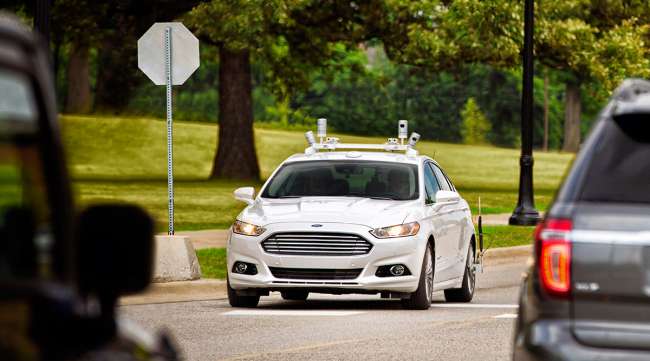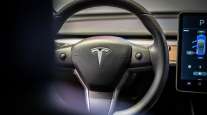The First True Autonomous Cars Won’t Be for Sale

Auto companies at the CES tech convention in Las Vegas affirmed plans to have their first true self-driving cars in production by 2021 — or in some cases earlier.
But don’t expect to see these vehicles on any dealership lots.
This first generation of autonomous vehicles will, in most cases, not be offered for sale or lease to the general public, but instead would be reserved for commercial use by ride-hailing fleets and delivery services.
For instance, Ford plans to own its initial fleet of self-driving cars and sell the use of those vehicles as a service to businesses. That’s a contrast from automakers’ traditional business model.
RELATED: Safety advocates say not so fast on driverless cars
That means the first truly autonomous Ford wouldn’t be available for consumers to buy, said Sherif Marakby, the company’s vice president for autonomous vehicles and electrification.
A major reason why is that these vehicles, despite their arrays of advanced sensors and computers, would only be capable of operating in sustained, fully autonomous mode in a select few urban areas that have been wired and digitally mapped for self-driving.
Cars that venture outside of these future autonomous-ready zones might need to switch over to manual driving mode, depending on the surroundings and driving conditions.
“So if you (were) to buy one, you’re only going to be able to operate it in specific areas,” Marakby said in an interview this week at Ford’s CES booth. “So if you need to go somewhere else and they don’t work, you’ll be disappointed.”
Ford plans to roll out its first-generation autonomous vehicles in densely populated urban areas, where the vehicles would be moving people and commercial goods.
An early test of this business concept was the automaker’s recent partnership with Domino’s, in which Ford Fusion hybrids played the role of driverless, self-service pizza delivery vehicles in Ann Arbor.
Moving toward its 2021 autonomous vehicle production goal, Ford announced it has partnered with delivery service Postmates to start experimenting with how self-driving vehicles can be used to make quicker, more convenient deliveries of groceries, food, packages and retail merchandise.
“We see the business opportunity as very, very large compared to traditional automotive margins,” Marakby said of the mobility-as-a-service concept, once it fully blooms.
“What’s driving the business for autonomy is utilization and revenue per mile,” he said. “We want these vehicles to be running all the time, most of the day, and we want them to be generating revenue.”
General Motors has said it plans to deploy its first self-driving vehicles — heavily modified electric Chevy Bolts — in a ride-sharing service to be available in 2019 in certain urban areas. Its partner, Cruise Automation, is currently testing autonomous Bolts in parts of San Francisco with safety drivers and engineers inside.
And a fleet of completely driverless Chrysler Pacificas, outfitted by Google-owned Waymo, are expected to begin shuttling passengers around the Phoenix area later this year.
Toyota executives said this week at CES that they plan to have at least a demonstration of a true self-driving car ready by the 2020 Tokyo Summer Olympics.
Ford’s autonomous vehicle partner — Pittsburgh-based Argo AI — is currently road-testing self-driving Ford Fusions, also with safety drivers and engineers.
These Fusions are easy to spot; they are marked “Self-driving Systems Development” and have spinners on the roof, known as LiDAR, which acts like a light-beam radar.
“We basically test between Dearborn and Ann Arbor. Those are the two test points, in each of those cities and on the way in between,” Marakby said. “We test up and down the Southfield freeway ... we hit Allen Park, we hit Southfield.”
These vehicles are not only testing equipment and software, but digitally mapping their surroundings to make it easier for future autonomous vehicles to navigate.
“The high-definition maps that autonomy relies on are not available. You actually have to create them,” Marakby said.
Once Ford introduces its first commercial driverless vehicle in 2021, it won’t be a Fusion but an entirely new vehicle. The automaker is saying little about this “dedicated autonomous vehicle,” aside from it being a hybrid and not an all-electric car like the Bolt.
A key benefit of hybrids is their ability to fuel up fast and pick up the next passenger or business assignment — no lengthy charging times.
“We believe that’s the right solution because it maximizes utilization,” Marakby said, “You can run hybrids all day long.”
Distributed by Tribune Content Agency, LLC




